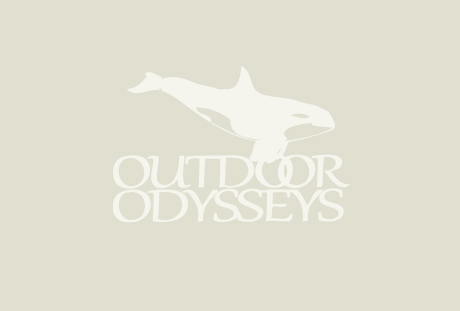On Tuesday November 15, 2005, the federal government increased the level of protection for Puget Sound’s Orca whales by listing them as an endangered species. The Orcas were previously listed as a threatened species.
About San Juan Island’s Orca Whales
Learn more about the habits and habitat of Orca whales. Orcas spend their lives in long-term social groups, called pods (group size: 3-25) These pods are stable family-related groups. Orcas display a high level of care for their offspring. The orca’s gestation period is thought to be 12-16 months, with most calves born between October and March. In addition to the mothers, various
Orca Whale Quick Facts
The largest of all dolphins (the Delphidae family), the orca is also known as killer whale, blackfish and grampus. At birth an orca can weigh up to 395 lbs. The adult weight can range from 2.6 tons to 9 tons. Orcas can swim up to 34 mph (55 km/h). A female orca’s milk contains about 48% fat for several months after her calf is born. During first several months of its life, the calf will often consume 10% of its body weight per day in order to develop a thick layer of insulating fat, or “blubber”, on its body.…
Minke Whales
Orca aren’t the only whales found in the waters of the San Juan Islands. Northern minke whales also live in the inland coastal waters of Washington but can be shy of boat traffic.
Bald Eagle Facts
The San Juan Islands host between 40 to 50 breeding pairs of bald eagles, one of the largest eagle nesting populations in the continental United States.
Birding in the San Juans
The rocky and tree lined shores of the San Juan Islands provide an excellent habitat for a wide variety of different bird species.
Salmon
The primary food source for the Southern Resident orcas is salmon. In fact, approximately 80-90% of a Resident orca’s diet is composed of these fish. A National Marine Fisheries Service study in March 2010 found that orca whales consume a specific species, the Chinook salmon. Also known as King or Tyee salmon, the Chinook salmon (Oncorhynchus tshawystscha) stocks originate in rivers from central California to northwest Alaska. These salmon are anadromous, which means that they spend the majority of their life in the ocean but return to their natal freshwater streams to spawn, or reproduce. Chinook are typically the largest…
May Sunset Magazine Article on the San Juans
We had a nice mention (and great photo!) in the current May issue of Sunset Magazine. They ran a four page “Insider’s Guide to the San Juan Islands” and we had the good fortune to be mentioned on page 78. (If you look closely the paddler in the back of the kayak is my wife, Libs!) The photo was taken just as we were leaving San Juan County Park on the West side of San Juan Island. We launch all our 1, 3 and 4 day tours from the county park as it is the best place in the San…
Pacific Smelt Population Threatened
Pacific smelt, a small silvery fish also known as eulachon or candlefish, has been listed by NOAA as a threatened species due to declining populations. Pacific smelt was a staple of the Northwest American Indian tribes when the Lewis and Clark expedition arrived on the west coast in 1806. Lewis was impressed enough with smelt as a food source while spending the winter on the Oregon coast that he drew a picture of the fish in his journal. Historically, their numbers were so abundant one could literally ‘rake’ them out of the rivers. Times have changed. “The tribe just had…
Hard Working Forests in the NW
One reason people enjoy kayaking the San Juan Islands and visiting the Northwest is due in part to the beauty of the lush, verdant forests in our region. Not only do these forests provide valuable habitat and recreational opportunities, but they also play a major role in combating climate change by storing carbon. In a recent analysis released by the Wilderness Society, the top 10 national forests for storing green house gases in the United States are in the Pacific Northwest and Southeast Alaska. The Olympic National Forest tied with Umpqua National Forest in Oregon as the second-best carbon bank…
